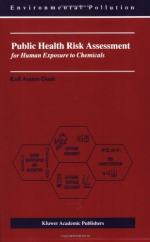|
This section contains 365 words (approx. 2 pages at 300 words per page) |
Dilution was the solution to pollution when populations were small. Everything people wanted to get rid of went into the water. These wastes were typically organic, such as human wastes and animal carcasses. They became food for animals, macroinvertebrates, bacteria, and fungi that broke down the waste. As small villages grew into towns and towns into cities, waterways were overwhelmed by the amount of disposed wastes, and many rivers became open sewers.
A larger problem developed during the Industrial Revolution. Chemicals used in industry were added to the mix in the rivers. Many of these substances could not be broken down naturally or biodegraded even in wastewater treatment plants. But because lower concentrations of cancer-causing pollutants, for instance, proved less harmful or had no effect in animal studies, the dilution of pollutants in large amounts of water was thought to be an effective method of disposal. Scientists, however, have recently discovered that many pollutants (pesticides, industrial chemicals, and pharmaceuticals) mimic hormones and can interfere with the reproduction of birds and fish at parts per million (ppm) to parts per billion (ppb). Dilution cannot render these pollutants harmless.
Nor does dilution work for chemicals that bioaccumulate. These persist through the food chain and increase in each organism. The U.S. Environmental Protection Agency (EPA) has banned twenty-two bioaccumulating chemicals (BCCs) in its Great Lakes Initiative (1995), including dichlorodiphenyl trichloroethane (DDT), polychlorinated biphenyls (PCBs), mercury, and dioxins. The Great Lakes Basin 2020 Action Plan of Environment Canada's Great Lakes Programs is working on the same problems. The International Joint Commission has designated forty-two areas of concern (AOCs) or pollution hot spots in the Great Lakes region. EPA regulations require industries using these chemicals to treat them at the source rather than releasing them into waters.
The Whole Effluent Toxicity (WET) test is used to test the toxicity of effluent flowing into uncontaminated waters. The WET test is species-specific. The EPA has developed "Self-Implementing Alternate Dilution Water Guidance." This is included in any National Pollutant Discharge Elimination System (NPDES) permit issued by the EPA and would be used if a WET test shows the toxicity of water at the site for the species specified by the NPDES permit.
|
This section contains 365 words (approx. 2 pages at 300 words per page) |


